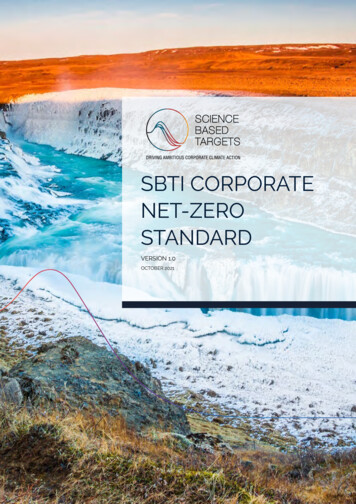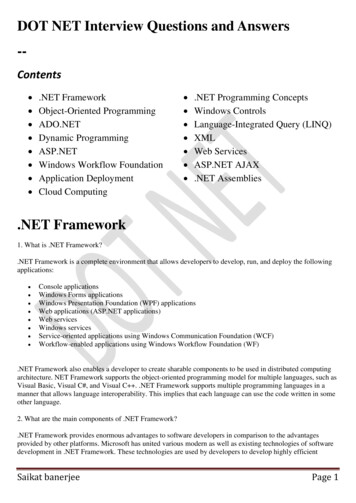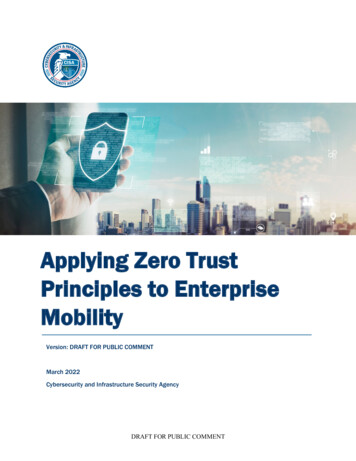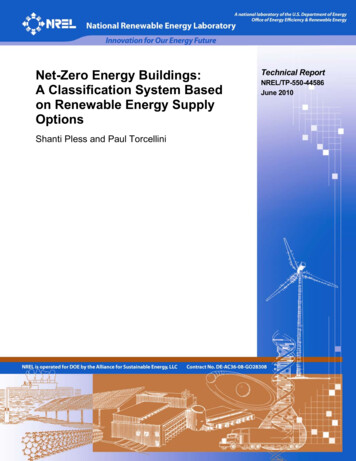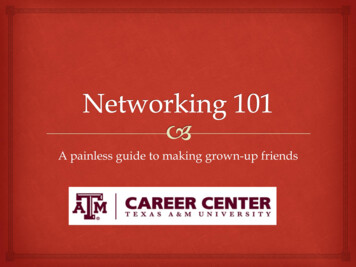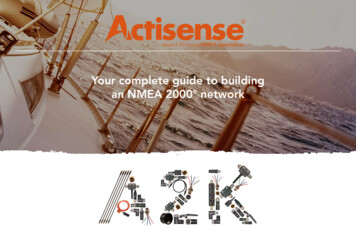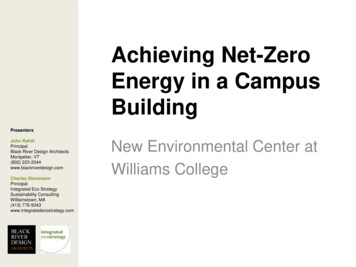
Transcription
Achieving Net-ZeroEnergy in a CampusBuildingPresentersJohn RahillPrincipalBlack River Design ArchitectsMontpelier, VT(802) 223-2044www.blackriverdesign.comCharley StevensonPrincipalIntegrated Eco StrategySustainability ConsultingWilliamstown, MA(413) 776-9343www.integratedecostrategy.comNew Environmental Center atWilliams College
Achieving Net-Zero Energy in aCampus Building1.Net-zero concepts2.Living Building Challenge newEnvironmental Center atWilliams College3.Impact on the design process4.Net-zero strategies5.Building in feedbackmechanisms to impact occupantbehavior6.Learning opportunities7.Institutional benefits2
1. Living Building Challenge &Net Zero Concepts“Imagine a building designed and constructed tofunction as elegantly and efficiently as a flower.” Net zero energyNet zero waterThe cycle of foodCarbon effectOther relatedimpacts:– Transportationenergy– Communities, notbuildings areregenerative3
2. Center for Environmental Studies &Zilkha Center for Environmental Initiatives4
Project is in the middle of campus5
Old Kellogg House(the additional challenge of making a historic building net zero)Repurposing an existinghistoric 1792 building(recycling at its best)6
Center for Environmental Studies & Zilkha Centerfor Environmental Initiatives7
Food & ldingGardenNew s LibrarySite Plan8
Design goalsWhat constitutes a successfulsustainable ,connected toenvironmentdurableSuccessfunctionalrepeatableLow energy use(net zero)Cost limitationsRed list materiallimitationsThe most sustainable buildingsare the ones we love the most.Connecting indoor spacesto exterior spaces and theenvironment9
3. Impact on the Design Process1st Step – Goal Alignment10
LEED vs. LBC65 LBC projects11
LEED vs. LBCSustainable AgricultureNet zero waterConstructed WetlandNet zero energyMaterials12
Materials
Performance-Based CertificationRedefining Success14
Size Matters15
4. Net Zero StrategiesBalancing Supply & Demand60,00055,000 KWh/yr 27 mbtu/sf50,00020% Safety40,000Guaranteednet zero?Ground Mounted PV(4 Trackers)Water & ,000VentilationHot WatercoolingBuilding Mounted PVheating10,000Envelope-ConsumptionSupply16
Traditional Payback AnalysisMost Cost Effective Net Zero Positive cash flow Select a payback periodBalance cost of saving a BTU vs.generating a BTUFactors (guesses) Borrowing rate Inflation rate Fuel inflation rateFactors (guesses) Longevity of energy saving component Ease of upgrading energy savingcomponent Longevity of energy generatingcomponentStrategy: spend money on saving energy, until it is less expensive to purchase the energy.17
Impact on EnvelopeRoof / wall: 5” polyisoWindows: R-5Below grade walls: 5” XPSSlab: 3” XPS18
Energy modeling of every componentInvest in energy savings until it is less expensive to invest in energy generation.19
Invest in energy savings until it is less expensive to invest in energy generation.20
Projected Energy UseToiletsMechanicalVentilationHot WaterSafety Factor (20%)Water Harvesting& TreatmentElevatorKitchenEnvelope (heating)Offices &ClassroomcoolingLightingA large portion on theenergy use in dependenton human behavior.21
Safety Factor60,00050,000kWh/yr40,00030,00020% SafetyWater &ToiletKitchenOfficesElevatorGuaranteedGroundnet zero?Mounted PV(4 Trackers)Lighting20,00010,000VentilationHot WaterBuildingMounted PVEnvelope-ConsumptionSupply22
Other Elements Impacting Net ZeroKitchenAir Conditioning23
Other Elements Impacting Net ZeroLow Rainfall (36"); Tank 5,000 gallons, 3/4" irrigation55004500Gallons of Water3500combined capture2500consumption total (interior & exterior)1500total with max500-500 tion Season24
Accounting for Water’s Energy Impact25
5. Building in Feedback Mechanisms toImpact Occupant Behavior Building in feedback mechanisms, so itis clear that behavior matters Increase awareness of the connectionto the environment & natural cycles When failure is a “teachingopportunity” Research opportunities Building as living organism Building as a challenge!26
6. Learning Opportunities Being engaged in a living buildingBiophilia – connection to natureBenefit of the potential for failureResearch opportunitiesCollege courses relating to something tangibleBuilding as an exhibit for a wider audience27
7. Institutional Benefits Presence of young, bright,open minds – future leadersResources available for longterm thinkingColleges have significant(and expensive to maintain)building stockInstitutions are all in themarketing business (to highschool students) and have tobe at the forefrontLeadership involves lookingahead28
Achieving Net-ZeroEnergy in a CampusBuildingPresentersJohn RahillPrincipalBlack River Design ArchitectsMontpelier, VT(802) 223-2044www.blackriverdesign.comCharley StevensonPrincipalIntegrated Eco StrategySustainability ConsultingWilliamstown, MA(413) 776-9343www.integratedecostrategy.comQuestions?
Building in Feedback Mechanisms to Impact Occupant Behavior 26 Building in feedback mechanisms, so it is clear that behavior matters Increase awareness of the connection to the environment & natural cycles When failure is a “teaching opportunity” Research opportunities Building as living organism
